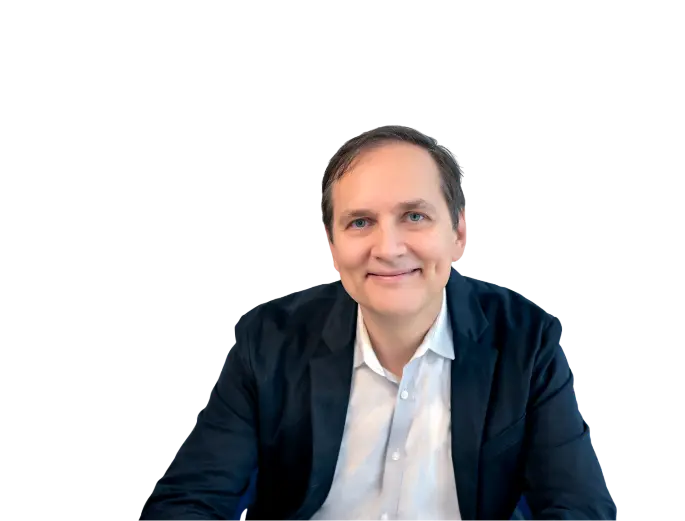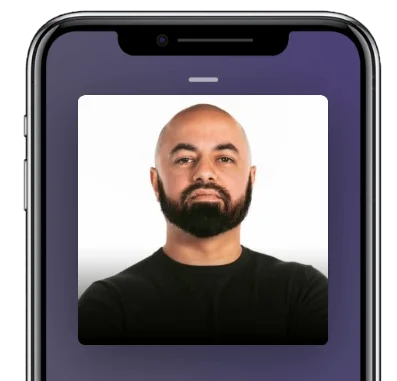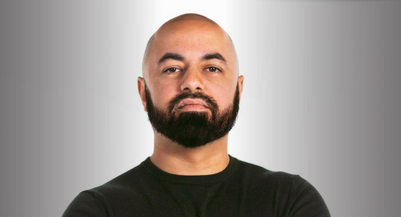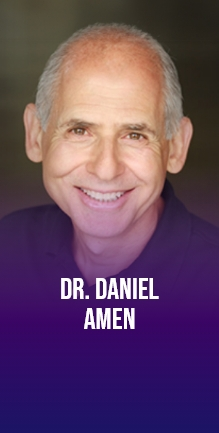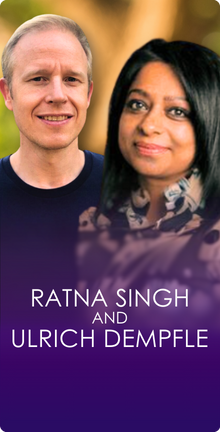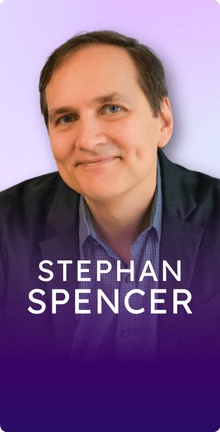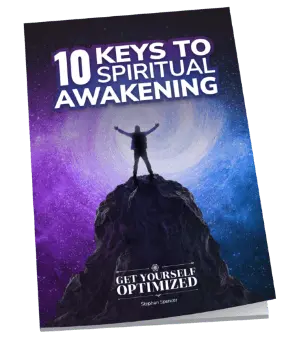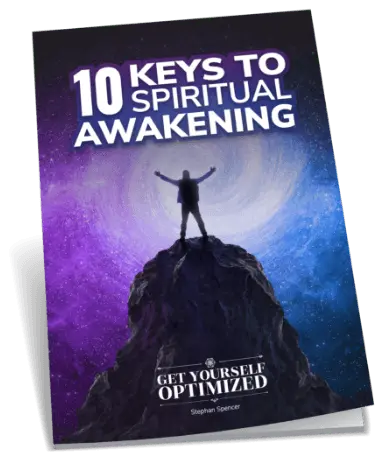In this Episode
- [00:30]Stephan welcomes Kashif Khan back to the show, an entrepreneur, investor, and co-founder of The DNA Company. Their discussion will focus on the application of genomics and its data interpretation.
- [03:07]Kashif discusses the practical interpretation of our brain’s enzyme receptors and the clearance enzyme called COMT in our mood and behavior.
- [06:31]Stephan shares his SPECT scan experience with Dr. Daniel Amen to better understand how his brain works. As Kashif says, Stephan is experiencing an emotional imprint.
- [10:15]Kashif explains that the COMT enzyme clears dopamine and noradrenaline. He also presents the Brain-Derived Neurotrophic Factor (BNDF), in which you have an optimal version of your experiences, making a person remember more details of their experience.
- [15:00]Kashif tackles the cardiovascular profile and explains some misconceptions we have about heart disease. As a result of our unhealthy lifestyle, including the food we eat and the level of stress we are exposed to, he emphasizes that we lack the ability to detoxify.
- [19:26]Kashif talks about internal toxicity. He suggests how to avoid our hardware from malfunctioning and how to deal with oxidative stress.
- [24:09]You become invincible when you start listening to your body. Kashif tells Stephan to boost his BNDF levels to escape from rewinding negative scenarios in his head.
- [26:57]Stephan wants to know where the carb-heavy diet fits into the inflammatory state of the gut, spurring Kashif to discuss the two stages of carbohydrates in the body.
- [28:41]Should gluten consumption be reduced? Kashif shares the challenge of cutting gluten in today’s modern lifestyle.
- [33:43]While talking about carbs and heirloom tomatoes, Kashif mentions that alterations in our gut microbiome decrease our ability to deal with inflammatory risks, especially when eating foods unsuitable to our body system.
- [35:13]Is it okay to be a vegetarian? Kashif describes the challenges of being a vegan. He mentions kale is not designed for humans; Stephan added it is like chowing down oxalic acid.
- [38:18]Kashif talks about being able to provide actionable reports and recommendations to clients in their company.
- [42:39]What are the three types of sleep problems? Kashif explains why people can’t fall asleep, can’t stay asleep, and sleep through the night but wake up tired.
- [48:14]Get to know more about The DNA Company’s research on their website. If you have considered getting a report, go to thednacompany.com/optimized to get a $50 off coupon.
Kashif, it’s so great to have you on the show again.
It’s awesome. We’re going to expose you like you’ve never been exposed before today.
That’s awesome. I’m looking forward to it because theory is interesting, but applied theory is where the rubber meets the road. That’s where we actually get the benefit. If you got knowledge and you don’t use it, what was the point? I’m grateful to have you back.
That’s what everyone’s going to hear today. Thanks for having me back. How do you take all this hard science? So many billions of dollars have been spent on researching the human genome, but everyone’s still sick. What do you do in terms of interpreting it? The key thing that I think was missing from genomics is, how do you interpret the data and apply it in practical terms? We’re going to look through that today. We can dive right in if you like.
I would love to. That’s awesome. Also, just a reminder for our listeners or viewers, they can buy their own test from you guys, The DNA Company, at $50 off if they go to thednacompany.com/optimized.
Right.
Awesome. All right, let’s get into it.
The one thing we do differently is we really think about mood and behavior before we think about everything else. After this path you talked about where we reviewed 6000 people, we understood there’s one thing to tell somebody something. Here’s what’s wrong, here’s how you fix it, but you have to understand, how do they even perceive that information? How are they going to act on it? How are they going to comply or be accountable?
We usually dive into the brain first. Your brain is a little interesting. The first chemical we look at is dopamine. Dopamine is a chemical that allows you to experience pleasure or reward. You ate some tasty food or you did something good at work, that’s dopamine. In order to experience it, you have to bind it. There are these receptors in your brain that literally are genetically determined what density of those receptors you have.
We never think about our brain as something that needs maintenance or service. We always see it as just there and take it for granted. Share on XIf we look at the dopamine pathway, you have the maximum ability to bind dopamine, but your ability to clear it is somewhat mid-level. How is that expressed? That’s the science without the practical interpretation you’re talking about. That you have dense dopamine receptors and your clearance enzyme, COMT, which gets rid of it and brings you back to normal.
What does that express in terms of mood and behavior? Who are you as a person? Because it’s so easy for you to experience pleasure and reward, you’re not really pursuing it or chasing it. You’re not the addict, award seeker, or thrill seeker. You’re more of the, I would even say naysayer, when it comes to things you’re not interested in.
You really truly have to enjoy it before you’re going to dive in. But when you do, you’re going to do a better job than most people. You’re going to binge or get lost in it because people that have dense dopamine receptors get lost in the pleasure. They get stuck in it because it’s not often that they get to experience that heightened level. But when they do, it’s like, oh, this is euphoric, I’m going to stay here. It’s like watching six episodes of Netflix as opposed to just one and moving on.
Or eating a whole bag of chips, right?
Yeah, exactly. But it’s hard to convince you which bag of chips to buy. Your friends might give you six recommendations and you’re like, no, it’s not that interesting because you’re just kind of satisfied anyway, but the one that gets you going, you’re lost. The bag is gone. Because your COMT enzyme is somewhat quick, you clear the chemical at a sort of medium pace. You can reset and get back to normal, which makes you more functional.
If you have the slower COMT, then you would truly be a binger. You will get lost in everything you do. It’d be very hard to get you to work or do anything. Unless it was that thing that you truly love and you do it for eight, nine hours and disappear.
Now we layer on top of those other neurochemicals that continue to tell the story. Beyond pleasure, there’s this sort of mirror of pain, trauma, pain, PTSD, trauma, and you have a somewhat dysregulated ability to deal with that. This means that you’re more likely to hold the grudge, hold on to the pain, and hold on to the trauma, not at an exaggerated level, but to a greater degree than the average person. You’re in the middle there, which is already more than enough.
Billions of dollars are spent researching the human genome, but everyone still gets sick. One thing missing in genomics is how you interpret and apply data practically. Share on XThat means, God forbid, there’s a car accident, you might not want to go down that street for a couple of weeks, maybe even a few months, or maybe not even get in a car for the next few days. Whereas somebody else might just jump in an Uber and go home.
That correlates with something that I learned from doing Amen Clinics’ Brain Scan, the SPECT scan. Then I had Dr. Daniel Amen on this podcast. I have this diamond pattern going on where I just tend to ruminate and it just keeps recycling over and over again. I will ruminate on something negative that happened and it’s hard to release it. I got to work on that to really let something go.
I’m going to tell you exactly why there are three things leading to that. We’ve touched on two of them so far. Once we talk about the third, I’ll tell you how they come back to that triangle that you’re talking about.
Literally, it’s an emotional imprint. When it comes to pain, anxiety, and trauma, there are some people that experience it, but they don’t hold on to the feeling of it. They hold on to the thought of it, the experience or learning. There are some people that literally hold on to the feeling that next time you fight with whoever about the same thing again, you’re starting where you left off last time.
You’re carrying forward the pain from previous, where for somebody else, it’s a brand new experience. Oh, this has nothing to do with last time. That’s your ability to deal with noradrenaline, that adrenaline response that either binds or completely ignores trauma and PTSD.
It also speaks to more of emotional intelligence, your ability to read the room, feel, think, and understand what other people are feeling because you come at things with the emotional wisdom that you’ve imprinted from all your past experiences where some other people don’t do that.
The serotonin is in the moment; how are you reacting?
Now we layer on top of that your serotonin response and this triangulates it the way you’re describing. Your serotonin is also slightly dysregulated, meaning that whereas with the noradrenaline, you’re retaining, remembering, or imprinting, the serotonin is in the moment, how are you reacting.
Your ability to deal with it as per what it is is slightly dysregulated. Meaning both negative and positive is very easy to pull you in different directions. I can get you laughing and giggling, and I can cause you pain and pull you back and forth, almost a bipolar response because you are more sensitive to all stimuli. It could appear as being irritable. It could appear as being that people have to be careful about how they say things to you, knowing that they’ll get a response, and then think that you’re going to blow up. It’s more like you’re going to feel it at the moment.
If you triangulate those things, you have this deep focus, binging, and thinking when it comes to your work, pleasure, and reward. You hold on to the pain, but you’re also experiencing things at a higher level of detail than other people. Because of that serotonin response, there are so much more stimuli. Both in work and pleasure, all these little nuances other people didn’t see, you noticed, and they all matter.
Now all of a sudden, that’s why you get lost in ruminating and keep replaying this thing in your head because the details mean so much more to you. You feel the details. You’re focused on the ones that you are driving for either pleasure or reward. You get lost in it.
I went so deep down the rabbit hole last year after my spiritual awakening in January that I went through as many courses, mentorships, and training as somebody would go through who’s pretty spiritual in a decade. I did it all in a year. It was insane.
Yeah, that’s awesome. Even just to ask yourself those questions and go on a journey like that, you start to self-actualize and realize what needs to be worked on, where you’re doing well, and where you’re not. We sometimes need to take a break and do that. We don’t think about our brain as something that needs maintenance or service. It’s just kind of there, you take it for granted. That spiritual work really helps reset and calibrate.
The one thing that’s making this all very functional is your brain-derived neurotrophic factor.
Going back to this, that COMT enzyme that clears the dopamine also clears the noradrenaline. You’re also experiencing it for a slightly longer time. Meaning that not only are you feeling it more and holding the pain more, but you’re also remembering in a little more detail. Some people are like, yeah, I had a car accident on the street, but you remember the name of the street, you remember the temperature of that day. The feeling you had, there’s a lot more to it for you. That’s why there’s a lot more to think about when you go back and spin your head around it.
The one thing that’s making this all very functional is your brain-derived neurotrophic factor, BDNF. You have the optimal version, which means your ability to develop neural connections is really strong. If you had the suboptimal, BDNF, what I would say to you is we would probably be doing this more as therapy than as a practical review because not only would you experience these things, feel them all, and be triggered by all these details and nuances, but it would also mean a lot. There’d be a weight on your shoulders.
For you, you’re dealing with a function. Okay, I’m going to go to this retreat, I’m going to do this thing and you know it’s there, but you’re working on it. For some people, it’s too much, I can’t handle life. Because your BDNF is so optimal, you’re very easily developing new neural connections. What does that look like?
First of all, mood and behavior. Again, less of that drama queen response. Yeah, you’re going to be bothered and irritated, but you’re not going to slam the door and leave the room. You’re not going to yell, you’re going to crumple up the paper and throw it at the wall. You’ll deal with it because you can.
It also speaks to concussion as more clinical representation. But because you develop neural connections well that brain repair happens quickly. It’s harder for you to get a concussion. You will recover quickly from it, which is important with the athletes we deal with. But because your brain activity is strong, it’s easy for you to develop new skills.
It’s very easy for you to go from entrepreneur to podcaster, to author, to speaking at an event, to all of these different things where somebody is like, hey, I’m a doctor, but not only am I a doctor, but I’m only a surgeon. I can’t even think about prescribing medication when you have the opposite. I’m really good at one thing and I can’t develop the neural connections to learn something else.
Because your brain activity is strong, you can easily develop new skills.
You can do that at a masterful level for many things, so that’s multi-prioritization, which also speaks to your COMT enzyme, which is somewhat quick that clears things and resets you quickly. The two things are compatible with each other and allow you to be this entrepreneurial person. But you’re entrepreneurial, not as a major risk taker or a reward seeker that does the stupid thing that takes big risks, but more as a thinker that will build something. That’s your mood and behavior.
We can dive into any one of those chemicals for an hour on our own. We really hit the surface level to describe who you are. Imagine understanding this about yourself before you’re trying to act on something clinical or life-changing. How do I actually think? How do I perceive it?
When somebody says to me, it’s six out of 10, for you, it’s actually eight out of 10 because there’s just so much more attention to the details and nuances. When you go to the clinician to talk about whatever the problem is, you’re going to tell them a lot more than the person that has the optimal serotonin. It’s like, yeah, let’s just get through this. That’s the mood and behavior.
Okay. I just want to share something that I experienced as you were explaining all this. I remembered back to the time that I totaled my car. I was pulling a U-Haul trailer and I was remembering so many little details. The gas station that was a little bit off in the distance was Love’s gas station, that was the brand. The mile marker that I had just passed was 66.5. All of these different little details.
I’ve been driving all night long and fell asleep behind the wheel at 5 AM. I almost made it and had an extra hour to go, I was driving from Ann Arbor to Madison. This was outside of Rockford. All these little details just came flooding back as you were describing how I can recall so many details of both pleasurable and traumatic moments. Pretty cool.
Yeah. That’s a perfect example. Putting it back into real-life terms. That’s how it applies. There are two things, that’s who you are. But now that you know who you are, you also know how you’re perceiving things versus other people around you. You can start to turn those dials and meet people where they’re at.
Yeah, great point.
Your cardiovascular profile. Again, this is something where we can spend two, three hours just on this. But I’m going to touch on the biggest thing, which is that you are blessed with a very unique and rare genomic profile where you have a highly resilient endothelial lining.
By the way, most heart disease doesn’t happen in the heart. This is where people get things wrong. It’s usually in the arteries around the heart. When you say, hey, I have bad genetics, my dad had heart disease, my uncle, or whatever. If you really dive into the disease, it’s usually cholesterolemia, calcification, blockages in the arteries for which the heart stops getting proper blood flow, and then obviously, you get a heart attack or something along those lines.
What we have to look at is arterial health. We can literally look at genetically, what quality of hardware do you have? What is this cellular structure? You have the ultimate version of what’s called the endothelial lining. All your blood vessels around your body, and it’s very important in the arteries around the heart, have this lining on the inner wall where the blood is actually touching the workflows.
You would think that the gold standard for human biology is you have good quality hardware. We actually don’t.
We have different versions of that. We have this stainless steel, resilient, strong version, which is what you have, then we have sort of a medium, and then we have this paper-thin, highly prone to inflammation version, which is what most people, by the way, are in the lower bucket. Most people don’t have the resilience that you have. We actually see very few people that have that.
You would think that the gold standard for human biology is you have good quality hardware, we actually don’t. This is why 50% of Americans are expected to have cardiovascular disease. It’s the number one killer. Thirty percent of American deaths last year were a cardiovascular disease. It’s not because we have bad hearts, but we aren’t designed to live the way we now live. We’ve inherited a legacy of our ancestors who didn’t have all the environmental food, and stress exposures that we now have that cause the inflammation.
Let’s get into that. You’re born with this good quality hardware. Suppose it was bad quality hardware because that’s what most people are going to have, what would then cause it to get sick? Why do people have heart disease? You’re not born with heart disease, it happens around 50, 55, or 60.
Some people have a poor ability to detoxify, meaning your ability to bind to chemicals and toxins in your blood. Just like when you drink alcohol, everybody knows your liver clears that. That same process is happening with all toxins, not only alcohol. Some people don’t do that so well.
Interestingly, when it comes to the traffic cops in the blood that are fooling around, sort of grabbing those things, it’s called glutathionylation, sending it to the liver. You do that really well. What you don’t do well is that first line of defense. You’re supposed to do this. Where do things enter your body? You breathe, they come through your lungs, and you eat things.
When you eat things, forget about what version, what variant, or what mutation of a gene that you often hear about. You don’t even have the gene. The GSTM1 gene, there’s a page torn out of your human instruction manual. You didn’t get it. This is a unique thing we test for all copy number variations.
Copy number variation means it’s not a spelling mistake, an SNP, or a variation. We’re looking for like, do you have the gene? Because there are some genes where that’s possible. Now we know that here at the gut, you don’t really clear or detox things, which means that if you’re eating foods that have pesticides or eating something as simple as hummus, which you would think is a healthy food, but guess what, they use chemicals to dry the chickpeas to ship them.
Some breads that you’re told are great, but guess what, they use chemicals to dry the wheat so they can store it, especially in Canada or in the east where it’s colder, and the Eastern US. There are things you have to be more careful of where if you were to eat them, it would cause this inflammatory state to your gut because you don’t clear the toxins that are associated with them that well, which means there’s a lot more of those toxins getting in your blood.
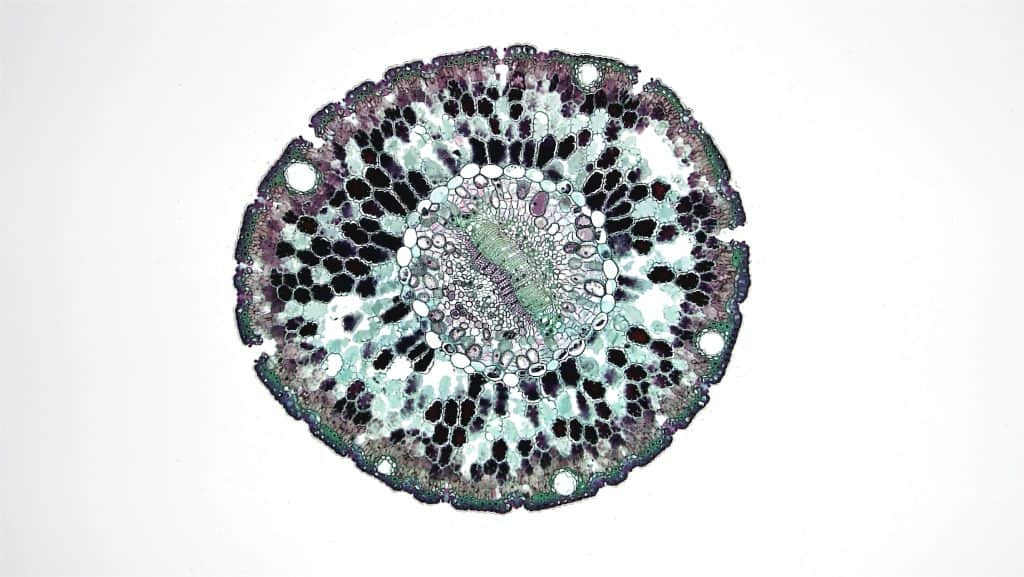
You also don’t do so well with internal toxins. What does that mean? What we spoke of until now was things getting in. Once it’s in, you do a decent job of getting rid of it, but it’s getting in too fast. You already have a challenge there. Guaranteed it’s getting in because both of the lungs and the gut, you don’t do so well. The gut, zero; lung is like 50%.
There’s also internal toxicity. What does that mean? All of the cells in your body are constantly trying to create energy. They do that by taking in nutrition and oxygen to convert into energy. That happens in the mitochondria, the powerhouse of the cell. In that process, you create what’s called an oxidant. The oxygen converts into oxidant, which is actually a potent toxin. It’s a free radical, you don’t want it. You’re supposed to get rid of it. You don’t do that so well.
Now all of a sudden, this fireplace that’s brewing or creating this energy, you don’t have a chimney. The smoke is just piling up on the cell, which leads to what we call oxidative stress, oxidation. People know what that is. If you put an apple out and you watch it rust, that’s oxidation. This happens in your body as well. For you, it happens at an exaggerated degree.
Now we know that you don’t clear oxidation well at the cell level, at the gut level, and you breathe it in. We know for sure, unless you’ve been living a completely optimal and clean lifestyle and supplementing perfectly, there’s probably a heavy load in your bloodstream.
Now we know you had the resilient endothelial, so it’s not that big of a concern for you, although you should still deal with it. But somebody that has the poor endothelial would probably already have a cholesterol problem or maybe even worse. Why? Because those toxins would then be causing damage to the endothelial lining. That was never designed to deal with toxins anyway. That wasn’t the purpose of that cellular structure.
Now that you have the bad version, it’s so much more prone to damage, which then leads to inflammation. When you have inflammation here, particularly in the arteries, your body will actually use cholesterol as a hormone to reduce the inflammation. When cholesterol meets toxicity, it hardens, gets deposited, and starts to build up. That’s the beginning of cholesterolemia, which is one of the root causes of our number one killer.
The good news for you is because you have such resilient hardware, you’re probably not ever going to get there. But I would tell you that you should start supplementing at the gut, enzymes to help you digest and detox supplements to help you clear what’s in your blood. I’d be very careful with what’s going in anyway.
Limit anything that’s not clean going in your gut, exposure to mold, pesticides, or chemicals. If you were to walk into a building that has epoxy or some kind of chemicals, you’d probably get a minor headache or joint pain type thing. The next day, you may not feel your best because your body doesn’t block or clear that stuff so well.
On the oxidative stress side, internally, you want to avoid high cardiovascular output because the more oxygen you’re breathing in, the more oxidation you’re causing. Your regular day-to-day, great, you can deal with it. But you’re at about -40% capacity, which means if you get into a high-intensity output like high-intensity training, running, or hardcore biking, you’re causing this oxidation that your body can’t clear.
I’m not telling you not to exercise. What I’m saying is the specific exercise you’re designed for is more resistance and weight training. If you’re doing your cardio, if you need it for your heart, get into a 10-minute hack of those high intensity. You’re running hard at 20 seconds and then you kind of let it close for three minutes, so you’re getting the benefit of the intensity in 10 minutes that usually would have taken 40 minutes.

I actually have a CAROL bike that does that very fine.
Oh, you have a CAROL bike? That’s what you do. That’s awesome.
I had the creators of the CAROL bike on this podcast. They sent me a bike.
That’s what you should do because the longer you’re in that oxidative stress, the more oxidation you’re causing, which means you want to condense that cardiovascular activity.
Yeah, that makes sense. Nothing is random. I think either everything is random or nothing is random. My belief is that nothing is random. The fact that I ended up with a CAROL bike and my body just knew not to do hard-out cardio exercises. I used to run track and cross country in high school, but then I stopped running.
I go for walks. I just spend time in nature. I don’t do the really hard-out stuff. Now it makes sense that my body just knew not to go over the top because I sweat like crazy when I’m exerting myself. I also get a really high heart rate when exerting myself.
Yeah, that makes sense. People fall into what they feel good about. Once you reach a certain age where your decisions aren’t based on ego anymore—when you’re younger, it’s like, oh, I can do it, I’m invincible—you start to listen to your body and fall in the right path.
For you, you will literally just not feel right if you exercise the wrong way. You wouldn’t enjoy it. If you’re not enjoying it, you’re not going to be consistent. If you’re not consistent, you’re not doing it. What’s the point to begin with? So do what you can actually continually do ongoing to stay healthy as opposed to trying to force yourself down the wrong path.
The other reason that you feel good, it’s not just because your body feels good with your mind. That low intensity, long duration, kind of 60%-70% heart rate, you’re pushing yourself and not to a high degree. Boost your BDNF levels, which for you is important because your neurochemicals are holding on to pain and trauma and you’re rewinding things in your head. It allows you to escape from that stuff and feel good, that kind of zen feeling.
It’s kind of like EMDR going for a walk, a long walk.
Yeah, literally, that’s what it is. There are other things that do it. A hot shower will do it. Deep breathing will also do it.
I just did 25 minutes of Wim Hof breathing right before our interview. Do you do Wim Hof breathing?
On and off, yeah. It’s not a consistent thing for me. I have a couple of friends out here in Toronto that do it. When I’m with them, I do. It’s not my regular routine, but I do feel the benefit of it.
You will not feel right if you exercise the wrong way. You wouldn’t enjoy it. If you’re not enjoying it, you will not be consistent.
Yeah, it’s awesome. I’d love to get Wim on my podcast. He’s one of my dream 100.
Yes, you got to. That’s brilliant. The things he’s doing to change people’s lives with such simplicity. You already have the tools built in you, you just need to access them.
Yeah. You can supercharge your immune system just from breathing. It’s just amazing.
That’s truly incredible. Just one of the things about your cardiovascular profile is your hypertension risk. Again, if we talk about hardware, there’s also what we talked about, the inner lining, the endothelial, but there’s also the outer ability to dilate and deal with blood pressure flow. You don’t do that so well, so your bigger risk is hypertension. You have to be careful with food and what leads to hypertension. Your typical doctor recommendations around that, right?
Not a lot of salt intake and junk food, that kind of stuff.
Salt, stress, good sleep, that type of stuff. It’s your average everyday recommendation. But for you, it just means a lot more because you’re already not doing well with the hardware. You’re just prone to it.
To jump back to the inflammatory state of my gut or the tendency towards that, where does a carb-heavy diet fit into that—I’m sure it’s not good—and bloating, gas, and things like that that could ensue?
That was literally the next thing I was going to open. The diet nutrition section we look at, I was actually going to go look at how you break down macro and micronutrients. The funny thing is you actually do really well with carbs, which most people don’t.
I love carbs. They’re very tasty.
Yeah. There are two stages to carbs. There’s one of taking the food and breaking it down into glucose, which is where a lot of people struggle. You actually do really, really well there, which is unique. We don’t see many people like that.
There’s taking that glucose and your insulin response being manageable. Not those peaks and valleys, but more consistent. I’m just going to take a peek here. You’re also doing well there. You actually are a carb machine. Almost everybody we talk to, we have to tell them that that’s a big challenge for them. But you are doing well there.
50% of Americans are expected to have cardiovascular disease, while 30% of deaths in the US last year were cardiovascular-related. It's not because we have bad hearts, but we aren't designed to live the way we now live. Share on XYour fat metabolization is not the best. You would not be an optimal candidate for a keto diet, as an example. You would probably feel really good in the first couple of weeks, but after some time, it would start to catch up with you. You just aren’t designed for it.
Your lactose is good. Gluten is good. I’m literally scanning through things as we’re talking. You have somewhat of normal sensitivity to gluten issues. I’m just trying to look at all of it to come up with the final outcome.
Would you say it’s fair to say that most people should reduce their gluten intake?
Yes. Here’s the challenge. When we talk to people about this, they say, well, my ancestors ate bread for so many years. Why are you telling me this? Why is it that all of a sudden people can’t eat gluten? I think it’s some kind of trend. What’s going on is your ancestors didn’t eat the bread we eat today.
Our DNA is 250,000 years old. We’re the same as people from a quarter-million years ago. That’s when there were major shifts in genetic code and we became who we are now. The food that people ate from 250,000 years ago to 10,000 years ago, when modern agriculture started, is not what we eat today. We still have the same DNA as those people. We’re still wired the same. It takes a long time to change and shift.
Modern farming started 10,000 years ago. There were really three or four grains. Now there are thousands of varieties that are designed not for the purpose of what’s best for me, but what’s resistant to bugs, what’s resistant to weather, what’s easy to transport because it doesn’t rot when it’s in a ship. The consideration is over what the best product is. It’s not about the final customer, us, it’s more about the industry, logistics, not spoiling, and those types of things.
The second layer to that is that the bread wasn’t soft and fluffy. It was hard. It was a heavy, heavy food. It was dense like a brick, literally. It was super dense. Soft and fluffy became that luxury, like, oh, this is good stuff. It’s almost like dessert. Now, bread and bread manufacturers went in that direction. It requires gluten to create that.
Our DNA is 250,000 years old. We're the same as people from a quarter-million years ago. Share on XThe bread we eat today even isn’t the same as the bread we ate two generations ago. Forget about 10,000 years ago because the ability to modify, focus, and shift towards a particular type and style, which is what people enjoy, the white fluffy bread, which requires a lot of gluten. A long answer to that question is, yeah, we were not designed to eat that stuff. The grains were sprouted and there were rye, spelt, and different things. They weren’t what we eat today.
Wheat was one of a very small of many options, and then the wheat that we use now, it’s not the same, just to answer that question in short. This is why so many people have a challenge.
There are so many wonderful options that most people don’t explore. For example, Teff is kind of a superfood alternative. More generally, I think it’s important for our listeners to understand that the produce and everything in the grocery store have been optimized for shelf life and for maximum yield. Even something as yummy looking and supposedly healthy as strawberries is treated with tear gas and flame retardant in order to maximize yield and reduce spoilage. It’s pretty crazy.
It is crazy, yeah. We empower it because we keep buying it. Our dollars could make a shift, but we have to consider all that. It starts with knowledge, everybody learning, and then you start to push for what’s right.
Even somebody like myself who’s studied so much about health and wellness and has a podcast about it, I didn’t even know until literally today what an heirloom tomato was. It’s actually way healthier. I did not know why there are these heirloom tomatoes out there that you can get. It’s just that they look ugly. How ignorant of me.
Yeah, when you go to any sort of mid-range restaurant, they all have tomatoes and lettuce. The tomatoes are all this kind of dark pink, almost you can call it red. It’s not food, it’s filler. Same thing with these two things, which you find in the base of any salad, the base of a nachos that fills up space, it’s not real food. It’s designed for exactly that, to be the filler, to be easy to ship, and to last a long time. There’s very little nutrition.
When you think about bread, you think carb. Bread used to be a proper source of protein because it was real food. You could rely on it as one of your protein sources. Now all that’s left is the starch. That’s all we’re eating. It’s literally just starch.
I can’t tell you how many people we’ve had to tell that their diet is the source of their health issues.
Eating a pizza, I tell my kids that it’s literally the same as them eating a few sugar cubes. There’s no difference molecularly. It’s literally like eating a few blocks of sugar. There’s no difference because of what that bread is made of. It’s not bread. It’s something else.
We also look at the microbiome, not in terms of the bacteria, but in terms of your ability to deal with the inflammatory risks associated with having a poor microbiome and eating the foods that are mismatched to you. One interesting thing we see in you is you’re not wired to be a vegan. I can’t tell you how many people we’ve had to tell that that’s the source of their health issues.
There are some people for whom it’s great that we actually recommend it. But for more people, more often, we have to tell them that they need to stop. There’s a doctor that we worked with. I think it was in San Diego. She says she’s been there for two years, she has been feeling horrible.
She was taking a hormone replacement therapy because her other doctor told her that’s the problem, that she was getting into menopause. We figured out that the day that she became a vegan, there was a gene that drives the enzyme activity to break down the beans, lentils, glumes, and even things like kale, the hard leafy stuff. You, like her, had the bad version of that gene, so you don’t do well with that.
Now combine that with the fact that your gut is ultra-sensitive. It doesn’t detox well. This is guaranteed IBS, leaky gut, Crohn’s, colitis, all that stuff if you do it over and over and over again for many years because of that inflammatory load, eventually, you’ll cross the threshold or you can’t come back. Coming back to it, there are some people for whom, again, we tell them it’s great to be vegan, and for you, no way. It’s a bad choice.
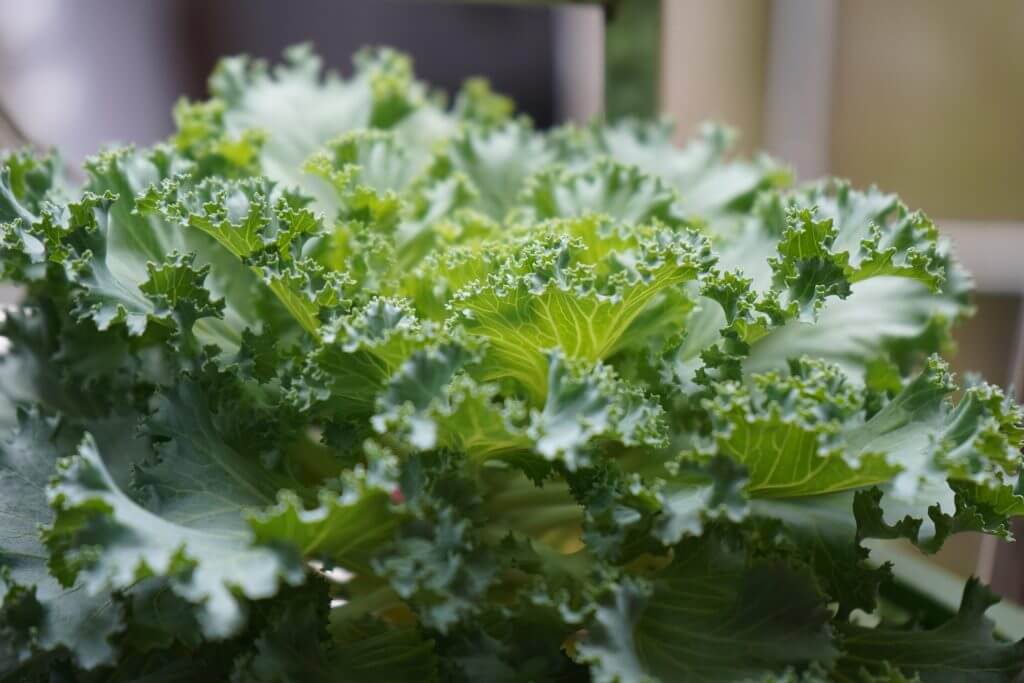
So is vegetarian okay, though?
The challenge is, if you’re a vegan, you rely on peas, beans, lentils, or glumes for your protein. You don’t do well there, so go ahead and eat your vegetables. Eat your peppers, carrots, root vegetables, your celery, all that stuff, go for it. The challenge is that hard leafy stuff that humans weren’t designed for like kale, we weren’t meant to eat that stuff. If it looks dangerous, it’s because it is. That spikiness to it, that’s Mother Nature signaling to you, this is not food.
I know that Dave Asprey rails on kale. He hates it. He thinks it’s terrible. Oxalic acid is what’s really bad and it gets in your joints. You’re just chowing down on oxalic acid when you eat a big kale salad.
Exactly. You can see by looking at the plant that it’s evolved in its ability to survive. It looks dangerous. It’s not only evolved in its look. It’s the ability for animals to chew it and avoid it, maybe, but it also has other defense mechanisms, and that acid will cause you damage. For you, it’s just even worse is what I’m saying.
What about the beans? It’s really tough to cut out beans from my diet because that’s a major protein source for me.
I’m in the same boat as you. This is not someone saying don’t eat this stuff. Kale, I’m saying, yeah, don’t eat it. The beans, lentils, and stuff, I still eat this stuff regularly. I have the same profile as you, I just don’t make it a staple. You can eat it.
If I have a pea protein shake, I will get bloated. I didn’t realize what was going on there, but that’s what’s going on. I don’t have the enzymes to break it down. For all of what we’re talking about, when it comes to your genetic capacity and your habits, there are two solutions. There’s capacity and there’s load. Meaning, if I tell you you don’t do well with beans, you can either stop eating beans or you can supplement with what you don’t do, which are digestive enzymes.
If you don’t detox, you don’t have that first line of defense.
The challenge is we’re not being prescriptive saying, no, we’re saying that here’s where you need to focus. If you don’t detox, for example, the lungs, like we said, you don’t have that first line of defense. I’m not telling you to never go near chemicals again, I’m saying take the right supplements. It’s something as simple as golfing.
If you didn’t have the internal capacity to supplement and do things right, then I would have to tell you, you can’t golf anymore because of all those pesticides in the golf course, you breathe in and get into your bloodstream. Some people can block them, you can.
There are two considerations for habit formation. One is to stop doing the thing, whatever you can do, supplement with whatever your lack of capacity is so you can do the thing, or maybe a combination of both. In your case, if you’ve got to keep eating beans, then make sure you’re taking digestive enzymes because you don’t produce enough of them.
Got you. Your company works with the client to formulate a new diet to determine what is the most optimal supplementation, exercise regimen, and so forth.
There are a couple of things we do. One thing is we’ve understood that in genetics, the reporting, the product that people get has always been underwhelming and failed actionability. People haven’t been able to take what they get and be able to do anything without going to a doctor, some genetic coach, or whatever to help them interpret it.
We said, the first thing we need to do is make sure that the reports themselves are actionable. That when somebody reads it, they don’t need anyone’s help but tell them in the same sort of plain language that I’m saying, here’s what’s wrong, here’s how you fix it. That’s one.
I would argue that if somebody has reports in their hand, they don’t need anyone’s help. But if there’s a particular goal in mind, we always recommend getting into coaching, which we do, so health coaching. We have clinicians that do it, health coaches that do it, depending on what problem we’re trying to solve. Why? Because it’s very easy to accept that you need to do something, to understand what it is, and read it. But to actually change your behaviors, what sticks, there’s a whole other science to that. That’s where you mentioned Dr. BJ Fogg earlier.
He was a guest on this podcast and that was a fabulous episode. I’m actually giving a little help with some SEO things too. His book is fabulous too, Tiny Habits. I highly recommend it.
Tiny Habits is amazing. Essentially, we took the science of Tiny Habits. We worked with Dr. Fogg to build that thinking into our coaching. That’s the other half. One half is, what’s wrong with me, how do I fix it, but how many people actually do anything about it?
The coaching allows you to develop the behaviors.
The coaching allows you to develop the behaviors. The way you develop behaviors isn’t as simple and intuitive as you would think. There’s a real science to how I actually do this stuff and change my life so that nine weeks from now, which we believe is the ideal time to make a shift, you are literally a different person, you have a different identity, and you now do this thing. Your old habits are gone.
That’s what we do. The test report, yeah, people get it. They can learn. But if you truly have something that you want to impact on, I would recommend getting into a coaching program, which we also offer.
Right. But let’s say that, for example, bloating or gas is an issue for somebody and their genetic report that they get from The DNA company gives some recommendations on some diet changes, would it also say, here’s a supplement that you can take if you don’t want to eat the beans and so forth?
Yes. We would help with the changes. Simple things like, okay, I need to eat less chemically-laced foods. A habit formation tool, which you wouldn’t consider. First of all, nobody has the will to go purge their pantry. If there’s an authority telling you today’s job is we’re going to go in your pantry, you’re going to put me on the camera phone, and I’m going to tell you what’s going in the garbage, being donated to a food shelter, or something.
It reminds me of the closet cleanse I did when I heard the fashion consultants. That was tough.
It’s very similar in practice. Even that one thing, without the accountability of a coach, you may not ever do it. Here’s your grocery list and you need to have this stocked by this date. Then they’re going to call you on that day to make sure you did it.
By the way, we know a challenge is when you go to work because when you go to work, you’re going out to lunch with friends, so how do you handle that? How do you make it easy for yourself? Those are the things that they work with you with. The challenge is, how do you take that challenging thing, which is so hard to change, and make it easy? We know how to make it easy.
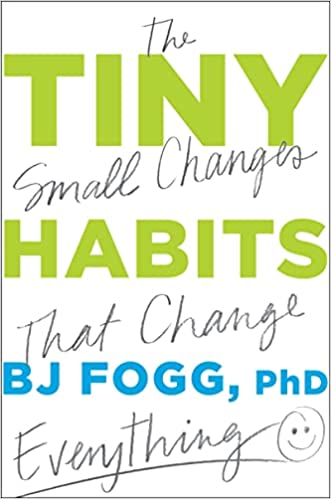
Now I’m going to look at your sleep report, which is interesting. Sleep is funny because we never actually intended on having a sleep report. It’s because so many of our clinical study patients said that sleep was their biggest problem. We had to solve it.
It’s a big problem for me.
It’s a big problem. I’m going to predict that for you, you don’t have a challenge falling asleep, you have a challenge staying asleep. Does that make sense?
Yup. I wake up earlier than I want to. It’s not because I have a two-year-old. That’s part of it, but it’s more than that. Even before having it in my head, I had that problem.
I’ll tell you why I already know that from your genetics without asking you. Usually, when you think of sleep problems, you’re thinking, oh, somebody can’t fall asleep. I know you don’t have a problem falling asleep, but I know you have a problem staying asleep. What’s going on there?
The sleep problems, genetically, we found three different things. I can’t fall asleep, I can’t stay asleep, or I sleep through the night, but I wake up feeling like garbage. I didn’t get good quality sleep. Why are you in the second bucket? We talked about your serotonin. Serotonin is that, again, mood regulator chemical. It’s also your response to stimuli.
Melatonin puts you to sleep, and everyone knows that. Hey, I can’t sleep, take a melatonin pill. That won’t help you. Why? You don’t have a challenge producing this hormone that tells your body it’s bedtime. I’m also guessing you sleep well for the first three-ish hours. It’s after that that you have a problem.
Your sleep cycle is broken up into two major parts, actually four parts, which are then condensed into two parts. There are about three hours each. The first three hours, you sleep, then everybody wakes up.
To what degree you wake up is different for different people. Some people don’t even notice and they go right into the second cycle. Some people get up and go to the washroom, so their level is different. For you, once you get up in the first cycle, your body is not meant to go into the second sleep cycle.
The challenge is because your serotonin is dysregulated, serotonin is your wake-up chemical. It’s the chemical that starts getting produced to tell your body it’s time to get to work, it’s time to get out of bed. Any stimuli, any stimulus, whatsoever—a little bit of light, noise, how they’re pulling on the blanket, whatever—is going to trigger you. Then your body, because it doesn’t deal with serotonin so well, gets tricked into producing too much of it. Then you, all of a sudden, biochemically are awake, even though you didn’t get enough sleep.
Your challenge isn’t I can’t fall asleep, it isn’t melatonin, it isn’t any of these sorts of things that you typically hear. It’s that your serotonin is out of whack and your body doesn’t know that you haven’t finished sleeping if you wake up, and everybody wakes up.
The solution is multifold. It’s, first of all, zero stimuli. Perfectly blacked-out room. You have to invest in that, unless you already have, even covering your eyes with a mask. You need very particular masks that don’t stimulate you because you’re so irritable in terms of all stimuli. There are these ones that don’t really lie on your face, but they have more of a doughnut to elevate them, so they don’t compress your eye.
When you develop neural connections better, the brain gets to repair what needs fixing more quickly. Share on XI have one.
Temperature has to be optimal, so something like a ChiliPad, those cooling pads because what happens as you’re in bed, after a couple of hours, that heats up and that temperature changes for you, you notice where other people don’t. That could be the one thing keeping you awake.
Getting rid of any potential smells or environmental triggers. If there are chemicals in the home, make sure that there’s a filter in your room that’s blocking them. If somebody’s getting up earlier than you cooking something, making something, you need earplugs so you can’t hear it, you can’t smell it.
Essentially, stimulus. Stimulus to you, after the first three hours, is going to wake you up. There are also supplements you can take to balance your 5-HTTLPR, which is the gene that deals with serotonin. There are lots of 5-HTT supplements out there. You can manage your serotonin levels and that, I’ll get offline and talk to you in a bit more detail—when to take it, how much to take, et cetera. It’s different for different people.
There, all of a sudden you’ve taken, I can’t sleep tonight or at night, to a very high level of specificity in terms of why. Why me? How am I not sleeping at night? It’s not just I can’t sleep, what’s going on at the biochemistry level? For you, it’s something very specific. You have the optimal BDNF gene.
Your circadian rhythm is great. That’s why I predicted that you don’t have a challenge falling asleep because your body knows it’s sleep time. That internal clock, you actually do really well.
The challenge is now that you’ve been waking up in the morning early, you’re resetting your clock also. Because you do such a good job with your internal clock. I actually wake up at this time, you’ve tricked your clock into believing that because your clock is so efficient. It’s so easy to reset.
You’re likely to have less challenges than other people with jet lag because you can reset the clock very quickly. That combination is your problem. That level of detail, we can go into for the person that can’t fall asleep. The person that sleeps or wakes up feeling like garbage, they’re different problems.
Wow, this is fascinating. We could go on for a long time. I know we got to wrap up though. This is fabulous. Wow. If our listeners aren’t convinced by now that they need to get this genetic test from you guys and I think also the coaching as well, they haven’t been listening.
All the people that they couldn’t fix, they would send to us. Then we would fix them, we’ll learn something, and then there’s something in the learning bucket.
Yeah, thank you because that’s the work we do. Our research was all-around working with functional medicine and executive clinics. All the people that they couldn’t fix, they would send to us. Then we would fix them, we’ll learn something, and then there’s something in the learning bucket.
Now that we’ve learned how to fix generally every problem that’s hit us, we’ve built the artificial intelligence platform to populate the report so that people have access to it. Otherwise, you’d have to spend thousands of dollars with one of our scientists and sit there.
A lot of Dave’s help as well, as you mentioned, he helped us understand what people actually need, how they need it, and that’s how it’s provided. Everything I’m speaking of, if you were to hold the record in your hand, you would pick it up, read it, learn it, and understand what to do.
Yeah, awesome. Fabulous stuff. So thednacompany.com to get more detail on the company, the technology, and everything. But if they want to get the report with a $50 off coupon, that’s thednacompany.com/optimized as in Get Yourself Optimized.
Yes, sir.
All right. Thank you so much, Kashif. It’s just a phenomenon.
It was a pleasure. Good talking to you, always. Thank you.
Now, listeners, you got to get out there and do something with this information and not just be entertained by it. You got to put it into action like we talked about at the beginning of the episode. Knowledge without action is worthless. We’ll catch you in the next episode. I’m your host, Stephan Spencer, signing off.
